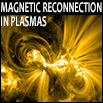Speaker
Ms
Elisabet Liljeblad
(Space and Plasma Physics, The Royal Institute of Technology, KTH, Stockholm)
Description
The low-latitude boundary layer is a region where a constant transfer of mass and
energy takes place. The layer has been studied extensively on Earth, but so far no
comprehensive study on the layer on Mercury exists. This study aims for a systematic
analysis on Mercury magnetopause crossings during year 2011 to identify and analyse
the LLBL and its properties, including thickness, interplanetary magnetic field (IMF)
dependence, plasma Beta and reconnection rates. The main goal is to determine
plausible LLBL formation processes on Mercury, and to establish whether or not the
Kelvin-Helmholtz instability (KHI) is involved in this process. Results so far show a
clear dawn-dusk asymmetry in occurrence, and indicate the KHI to be insignificant for
the LLBL formation. Moreover, the LLBL appear to occur more often for low magnetic
shear and low reconnection rates, indicating also that local large scale reconnection
near the subsolar point during southward IMF is not a significant factor in the LLBL
formation process.
Author
Ms
Elisabet Liljeblad
(Space and Plasma Physics, The Royal Institute of Technology, KTH, Stockholm)
Co-authors
Dr
Anita Kullen
(Space and Plasma Physics, The Royal Institute of Technology, KTH, Stockholm)
Prof.
James Slavin
(Department of Atmospheric, Oceanic and Space Sciences, University of Michigan)
Dr
Jim Raines
(Department of Atmospheric, Oceanic and Space Sciences, University of Michigan)
Prof.
Tomas Karlsson
(Space and Plasma Physics, The Royal Institute of Technology, KTH, Stockholm)
Dr
Torbjörn Sundberg
(School of Physics and Astronomy, Queen Mary University of London)

